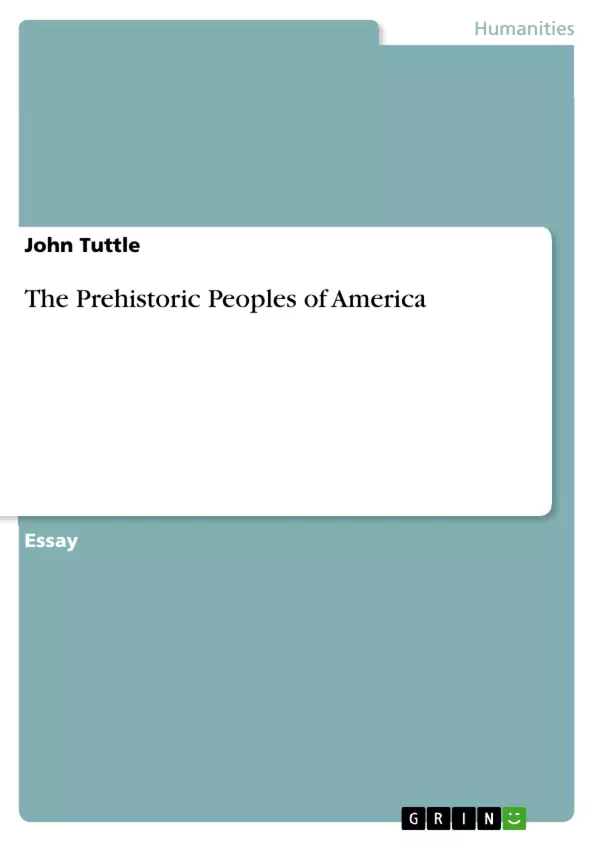Focusing primarily on North American developments, this essay discusses what several Native American cultures' practices and lifestyles were like in the Pre-Columbian era, that is, prior to the discovery of the New World by Spanish explorer Christopher Columbus. Many of the cultures mentioned actually disappeared before the 15th century. We shall explore archaeological finds and dig into the Americas' past. Elements of paleontology shall also be delved into as we read about some of the prehistoric fauna that early Indians were familiar. The evolution of the bison is noted as is its significance. However people made it to the Americas, it must have taken a great deal of courage (or stupidity) as well as perseverance. Let us explore the rich and ancient heritage of the Native Americans.
Inhaltsverzeichnis (Table of Contents)
- Ancient Origins
- Indian Artifacts and Ways of Life
- Clovis
- The Olmecs
- Prehistoric American Cities
- The Living Legacy
Zielsetzung und Themenschwerpunkte (Objectives and Key Themes)
This text aims to shed light on the history of the first peoples who inhabited the Americas, exploring their origins, lifestyles, and contributions to the development of North and South America. It delves into the pre-Columbian civilizations that thrived before the arrival of Europeans, showcasing their cultural advancements and archaeological significance.
- The origins and migration routes of the first inhabitants of the Americas
- The diverse cultures and lifestyles of pre-Columbian tribes
- The archaeological evidence of prehistoric civilizations and their impact on the landscape
- The legacy and enduring presence of Native American traditions and heritage
- The influence of prehistoric animals on the lives of Native Americans
Zusammenfassung der Kapitel (Chapter Summaries)
- Ancient Origins: This chapter explores theories about the first human migrations to the Americas, focusing on the Bering Strait land bridge hypothesis and the potential role of seafaring. It examines the evidence supporting these theories, including genetic studies and the discovery of mammoth remains.
- Indian Artifacts and Ways of Life: This section delves into the material culture and lifestyles of early Native Americans, highlighting their relationship with nature, animal husbandry, and hunting practices. It explores their use of bows, arrows, atlatls, and pottery, providing insights into their daily life.
- Clovis: This chapter focuses on the Clovis culture, once believed to be the oldest known civilization in the Americas. However, recent discoveries have revealed that other groups lived in North America before the Clovis people. This chapter examines the Clovis's hunting techniques, social structures, and eventual disappearance.
- The Olmecs: This section introduces the Olmec civilization, a significant cultural force in Middle America. It describes their religious beliefs, artistic creations, and the impressive architectural structures they left behind.
- Prehistoric American Cities: This chapter highlights two remarkable pre-Columbian cities: Teotihuacán in Central America and Cahokia in Illinois. It compares their size, population, and architectural achievements, offering a glimpse into the urban planning and societal complexity of these ancient civilizations.
Schlüsselwörter (Keywords)
The text primarily focuses on the themes of pre-Columbian civilizations, Native American history, migration patterns, archaeological evidence, and cultural practices. Key terms include: Beringia, Clovis, Olmec, Teotihuacán, Cahokia, Native Americans, Indians, prehistoric, artifacts, and ancient civilizations.
- Quote paper
- John Tuttle (Author), 2018, The Prehistoric Peoples of America, Munich, GRIN Verlag, https://www.grin.com/document/419042



